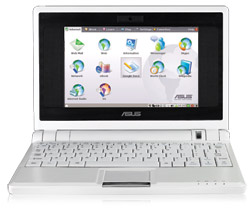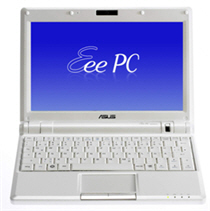Finally, the Asus EEE PC 900 has been launched. Yay! It is initially priced at P24,995. Way better than the rumored P33,900 before the launch. Some would say the price is still high especially since some full-featured notebooks are already within that range. But remember that the Asus EEE PC is way smaller and lighter (and cuter!) than these budget notebooks. Besides, you can be sure prices will slide down after a month or two.
It’s over. Finally, the long running DVD format war has effectively come to an end. Toshiba declared yesterday that it no longer will develop, make, or market HD-DVD players and recorders. Because Toshiba is the biggest proponent of HD-DVD, their action essentially concedes defeat to Sony’s competing Blu-Ray format. The beginning of the end came about when Warner announced early this year that it will produce content only on Blu-Ray. Warner has a huge amount of content and when they shifted to Blu-Ray, it’s just a matter of time. Less than a month it turns out. So now i guess everyone will be producing Blu-Ray players, recorders, and media hopefully driving down prices. So what? The future of content is online.
 Yesterday, as I was heading out for lunch, I encountered Tessa at the elevator lobby. She was carrying this small black neoprene case that almost without a doubt contained an electronic gadget. From the dimensions, I concluded that it was an Asus Eee which I’ve heard and read quite a bit about. But to be sure, I asked her and she confirmed that it is indeed an Eee. We talked about it a bit but since lunch was waiting, I scheduled a visit with her for later in the afternoon. As soon as I got some free time, I went up to her office and played around with the Eee.
Yesterday, as I was heading out for lunch, I encountered Tessa at the elevator lobby. She was carrying this small black neoprene case that almost without a doubt contained an electronic gadget. From the dimensions, I concluded that it was an Asus Eee which I’ve heard and read quite a bit about. But to be sure, I asked her and she confirmed that it is indeed an Eee. We talked about it a bit but since lunch was waiting, I scheduled a visit with her for later in the afternoon. As soon as I got some free time, I went up to her office and played around with the Eee.
The Eee is a diminutive device. It is around an inch thick and about the size of A5 paper and quite light. But it seems well-built and quite robust. The screen is small but quite usable especially when applications are in full screen mode. The keyboard is also small but still quite usable. The 900MHz processor is not too powerful and the 512MB RAM not too big but the response of applications is quite snappy. The storage is a (surprise!) small at 4GB, but quite fast since it is solid state (i.e. flash-based). If you need more, you’ll need to use external storage via up to three USB ports. But then again, most everything are stored online these days. Speaking of online it has both wired and wireless network interfaces.
But here’s the killer: It’s Linux-based! I know what you’re thinking. That it would be a complex beast. But no, it is actually seems quite easy to use. It has two mode: simple mode and full mode. In simple mode you’re presented with a very simple tabbed menu with large icons that even a grandma would like. Full mode, on the other hand, is the traditional Linux GUI with access to the applications you expect including my favorite: ssh. Oh yeah!
Do I like it? Hell yeah! But being new to the market, it’s still a bit expensive for my liking. But if someone were to gift me one, I wouldn’t say no. The black one please!
The LinkSys WRT54G is a ubiquitous router. In fact, I have one at home and two at the office. The one at home works fine but the same can’t be said for the two at the office. Every once in a while, you can’t connect to the WiFi network and you have to reboot. And often, you can’t access the web based administration console at all. Normally, the solution would be to upgrade the firmware. But if you have a WRT54G version 7, which is the case, you’re out of luck: LinkSys also does not provide firmware updates for this version. Or so I thought. So it was pretty hopeless for a while. But this morning, I learned that apparently LinkSys provides firmware upgrades for Europe. You can get it here. We’ve upgraded the routers at the office and everything is going smoothly so far.
UPDATE: It didn’t change anything. Darn!
 The Asus EEE PC 900 has been shown by Asus at CeBIT 2008. It’s got the same small and cute form factor as the originals but now has an 8.9″ screen, 1GB or RAM, and 12GB SSD. Those are exactly what I’ve been waiting for! Time to start saving up.
The Asus EEE PC 900 has been shown by Asus at CeBIT 2008. It’s got the same small and cute form factor as the originals but now has an 8.9″ screen, 1GB or RAM, and 12GB SSD. Those are exactly what I’ve been waiting for! Time to start saving up.